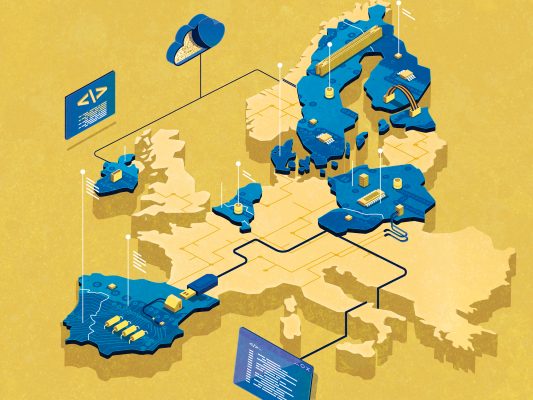Question: Is the fight against terrorist hate speech still a priority? After all, we haven’t suffered from terrorist attacks recently.
Answer: If you take all the terrorist attacks in Europe over the last ten years, it is probably fair to say that all of them relied on some organization done on an online platform – whether it is the terrorist cell that attacked Brussels and Paris in 2016, the ‘lone wolf’ Manchester Arena bomber, or others. In each case, individuals were radicalized or organized their attacks through an online platform.
This danger has not gone away. Since the fall of its caliphate, ISIS has turned its attention even more to Europe, and that’s why we must track these cells. Thankfully, Europe’s police and counter-terrorism forces have increased cooperation. They are foiling attacks, but we still face a deadly and real Islamist threat, and now Ukraine adds a new element to the terror threat.
Question: How is the war in Ukraine related to this terrorist threat?
Answer: European fighters are returning from the war zone and are security risks. Since 2014, an estimated 17,000 foreign fighters have been involved in combat. Some are on the Russian side; some are on the Ukrainian side. Ukraine is a focal point for malcontents. Many are either far right or far left in terms of their ideology. We know that some were involved in the violent Yellow Jacket protests in France.
Much of the recruitment is done on the Internet, on Telegram, Messenger, WhatsApp, and Facebook, among other platforms. It targets vulnerable and isolated individuals – usually young men. It teaches them deadly skills.
Question: How should we respond?
Answer: You want to regulate without destroying innovation. You want to close weaknesses and loopholes. The platforms must be forced to act, because they have allowed this content to flourish, or at least turned a blind eye to it.
Europe’s terrorist content bill came into effect just two months ago and represents a positive step forward. The Counter Extremism Project, with whom I work, supported it. The bill is not a vague catchall like hate speech legislation, which is subjective, open to misinterpretation, and raises legitimate freedom of expression concerns. This terrorist content law defines what type of videos and other content are considered to be terrorist. It is explicit. Bomb-making videos, for example, are forbidden. These videos are not a reasonable expression of speech – they are designed for malign purposes. Under the new European law, police notifications to remove such content are binding.
We could and should have gone further – mandating takedowns. Terrorist content continues to proliferate online, not just hundreds of thousands or millions of videos and images, but billions of pieces of content. In many cases, removed images just reappear. Platforms should be obliged to use hashing technology to keep illegal videos from reappearing.
A tragic example is the 2019 Christchurch attack on a mosque in New Zealand. It was live-streamed and went viral. Two months after the tragedy, the video was still available online.
Question: But didn’t the Christchurch Call represent a turning point when leaders began to speak out about getting tough on online extremism?
Answer: It was just a declaration that asks the tech companies to self-regulate. I believe government must step in. In no other sector would you allow such self-regulation – would you not regulate financial services after the global crash, would you not regulate aviation for health and safety? You cannot expect companies to self-regulate.
In my opinion the Christchurch Call has fallen flat, while Europe has moved ahead.
Question: What are the next steps?
Answer: Tech companies resisted a specific time for takedowns. I think there should be a 60-minute window. If you don’t get the material down fast, it mushrooms and becomes impossible to contain.
Europe’s Digital Services Act represents another positive step. It forces big platforms to step up because there are potential significant fines, up to 6% of turnover.
There’s much more that could be done. The DSA does not mandate the use of specific technologies, so we now have a system that is not consistent across platforms.
Question: And transatlantic relations? Will this issue divide Washington and Brussels?
Answer: It’s a good question. Europe is certainly ahead of the US for a number of reasons. In the US you have specific constitutional protections on free speech. That imposes a barrier, making lawmakers cautious.
From a practical point of view, most of the large tech success stories are American and there’s a risk of the US perceiving these measures as targeting US tech companies and as being protectionist. I think there is a consensus between the current US Administration and the EU that tech needs to be regulated. There is no need for this issue to generate massive tension. It’s good that both sides are discussing it at the Trade and Technology Council.
Lucinda Creighton is a non-resident Senior Fellow at CEPA and the former Irish Minister of European Affairs. She is a Senior Europe Advisor to the Counter Extremism Project.
Bandwidth is CEPA’s online journal dedicated to advancing transatlantic cooperation on tech policy. All opinions are those of the author and do not necessarily represent the position or views of the institutions they represent or the Center for European Policy Analysis.





